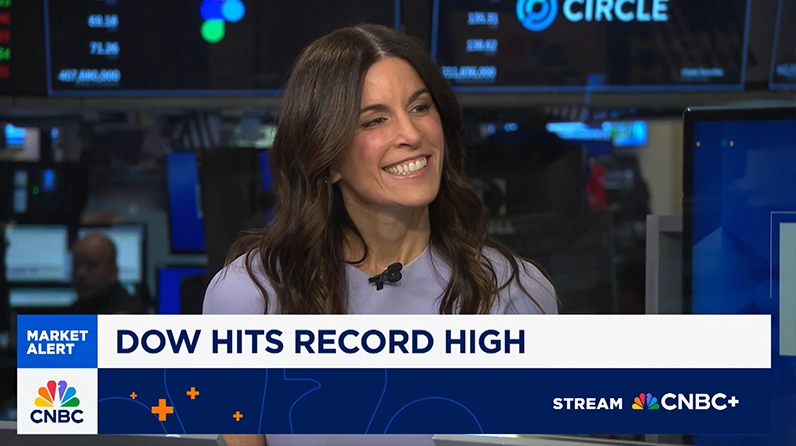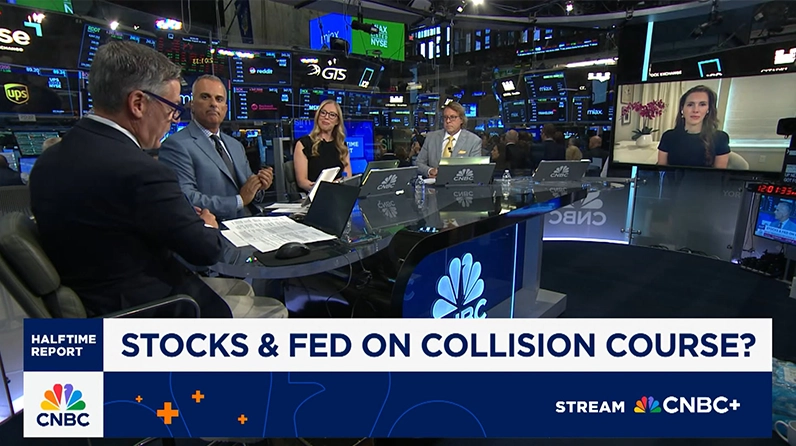

We see near-term volatility as an opportunity to deploy cash and reallocate back to strategic long-term allocations and encourage clients to revisit concentrations at the asset class, sub-asset class, and individual company level.
With uncertainty dominating the landscape, and on the back of a sharp rally in equity markets, the highly anticipated May non-farm payrolls report represents another piece in what is becoming an increasingly difficult puzzle to solve as investors gear up for the second half of the year. The report showed non-farm payrolls grew +139k for the month, above the consensus for +126k, but also well above the whisper numbers which had been moving lower after a dour ADP print earlier in the week.
Driving the print were continued gains in health care (+62k) as well as job adds in leisure and hospitality (+48k), social assistance (+16k), and financial activities (+13k). Not surprisingly, federal government job losses continue to mount, with payrolls down -22k in the month, but there were also losses in manufacturing (-8k) and temporary workers (-20k), a reflection of the still challenging tariff backdrop. In addition, revisions to March and April payrolls netted to a decrease of -95k versus the previously reported prints.
Looking deeper, however, there are contradictions in the underlying data indicative of the fluid economic backdrop. While the unemployment rate remained steady at 4.2%, the labor participation rate fell to 62.4% from 62.6% – an unwelcome sign for a Fed looking to support its maximum employment mandate. There was a decline of -696k in employed persons in the month and unemployed rose by +71k – the fourth straight month of gains in that category. Conversely, wage growth remains ahead of inflation, as average hourly earnings grew by +0.4% month-over-month, and +3.9% year-over-year. Hours worked were steady at 34.3, with manufacturing hours worked ticking up slightly.
While the better-than-expected payroll adds ease to some of the mounting concerns around the potential for a near-term sharp deterioration in the hiring environment, there are still a lot of unanswered questions as to the resiliency of the labor market. The recently released Fed Beige Book indicated that nine of the twelve districts were reporting a decline in economic activity and cited the increase in policy uncertainty as a challenge. The May ISM Services PMI also decelerated, falling to 49.9 from 51.6 in April. This drop was attributable to a decline in both business activity and new orders, and while employment was modestly higher, so were prices paid. We believe this is something to watch as we move into the summer and weigh the possibility of Fed policy shifts in the second half of the year.
As for the Fed, today’s release lowered the probability of a Fed rate cut in September to 75%. As a reminder, this probability spiked above 90% recently but is likely to fluctuate as additional hard economic data points are released, providing color and context to the primarily cautious narrative. The Fed would likely prefer to remain on hold at least for the next several months to gauge the broader impact of constantly shifting tariff implementation; there could also be an improvement in business confidence and activity based on the new tax bill that could provide some additional support to the labor market.
A risk on market reaction is dominating in the early U.S. sessions, with equities higher and yields modestly higher across the curve. Our view is that the Fed will continue to watch Congress and the White House closely to determine the potential inflationary pressures resulting from policies, as it is likely that changes in policy, particularly as it relates to the very significant legislation currently being negotiated in the Senate, will have a much greater impact on yields this year than the timing of the next 25 basis point cut.
In terms of positioning, we would look to near-term volatility, especially during the lull ahead of Q2 earnings season, as an opportunity to deploy cash and reallocate back to strategic long-term allocations. Given the re-emergence of the benefits of diversification, we are also encouraging revisiting concentrations at the asset class, sub-asset class, and individual company level, with an eye towards allocating to our higher conviction areas of opportunity.


VIDEO
Shannon Saccocia Featured on CNBC’s Halftime Report

INSIGHTS
CIO Notebook: July CPI In Line as Services Inflation Reaccelerates

MARKET COMMENTARY
Anything But the Doldrums

Accolades
Forbes | SHOOK 2025 Top Next-Gen Advisors Best-in-State

INSIGHTS
CIO Notebook: U.S. Non-Farm Payrolls Light, Putting Fed Cut Back on the Table

INSIGHTS
CIO Notebook: Fed Still on Hold, Timing of Cuts Remains Uncertain

VIDEO
Mid-Year Check-In
REPLAY
Private Wealth Investment Outlook 3Q25
INSIGHTS
Safeguarding and Supporting Loved Ones in Mental Decline
INSIGHTS
The International Moment
INSIGHTS
Sizing Up Cryptocurrency
Accolades
Barron’s Top 100 Women Financial Advisors for 2025
MUNICIPAL BASIS POINTS
All You Can Eat
IMPORTANT INFORMATION:
This material is provided for informational purposes only and nothing herein constitutes investment, legal, accounting or tax advice, or a recommendation to buy, sell or hold a security. This material is general in nature and is not directed to any category of investors and should not be regarded as individualized, a recommendation, investment advice or a suggestion to engage in or refrain from any investment-related course of action. Any views or opinions expressed may not reflect those of the firm as a whole. Neuberger Berman products and services may not be available in all jurisdictions or to all client types. Diversification does not guarantee profit or protect against loss in declining markets. Investing entails risks, including possible loss of principal. Investments in private equity are speculative and involve a higher degree of risk than more traditional investments. Investments in private equity are intended for sophisticated investors only. Unless otherwise indicated, returns shown reflect reinvestment of dividends and distributions. Indexes are unmanaged and are not available for direct investment. Investing entails risks, including possible loss of principal. Past performance is no guarantee of future results.
Portfolio positioning views expressed herein are those of Neuberger Berman’s Private Wealth Investment Group, which may include those of the Neuberger Berman’s Asset Allocation Committee. Asset allocation and positioning views are based on a hypothetical reference portfolio. The Private Wealth Investment Group analyzes market and economic indicators to develop asset allocation strategies. The Private Wealth Investment Group works in partnership with the Office of the CIO. The Private Wealth Investment Group also consults regularly with portfolio managers and investment officers across the firm. The Asset Allocation Committee is comprised of professionals across multiple disciplines, including equity and fixed income strategists and portfolio managers. The Asset Allocation Committee reviews and sets long-term asset allocation models, establishes preferred near-term tactical asset class allocations and, upon request, reviews asset allocations for large, diversified mandates. Asset Allocation Committee members are polled on asset classes and the positional views are representative of an Asset Allocation Committee consensus. The views of the Asset Allocation Committee and the Private Wealth Investment Group may not reflect the views of the firm as a whole and Neuberger Berman advisers and portfolio managers may take contrary positions to the views of the Asset Allocation Committee or the Private Wealth Investment Group. The Asset Allocation Committee and the Private Wealth Investment Group views do not constitute a prediction or projection of future events or future market behavior. Defensive positioning generally means an underweight bias on allocations to risk assets such as equities and alternatives. Positioning views may change over time without notice and actual client positioning may vary significantly. Discussion of yield characteristics or total returns of different asset classes are for illustrative purposes only. Such asset classes, such as equities and fixed income, may have significantly different overall risk-return characteristics which should be consider before investing.
The information in this material may contain projections, market outlooks or other forward-looking statements regarding future events, including economic, asset class and market outlooks or expectations, and is only current as of the date indicated. There is no assurance that such events, outlook and expectations will be achieved, and actual results may be significantly different than that shown here. The duration and characteristics of past market/economic cycles and market behavior, including any bull/bear markets, is no indication of the duration and characteristics of any current or future be market/economic cycles or behavior. Information on historical observations about asset or sub-asset classes is not intended to represent or predict future events. Historical trends do not imply, forecast or guarantee future results. Information is based on current views and market conditions, which will fluctuate and may be superseded by subsequent market events or for other reasons.
Discussions of any specific sectors and companies are for informational purposes only. This material is not intended as a formal research report and should not be relied upon as a basis for making an investment decision. The firm, its employees and advisory accounts may hold positions of any companies discussed. Nothing herein constitutes a recommendation to buy, sell or hold a security. It should not be assumed that any investments in securities, companies, sectors or markets identified and described were or will be profitable. Investment decisions and the appropriateness of this content should be made based on an investor's individual objectives and circumstances and in consultation with his or her advisors.
Neuberger Berman Investment Advisers LLC is a registered investment adviser.
The “Neuberger Berman” name and logo are registered service marks of Neuberger Berman Group LLC.